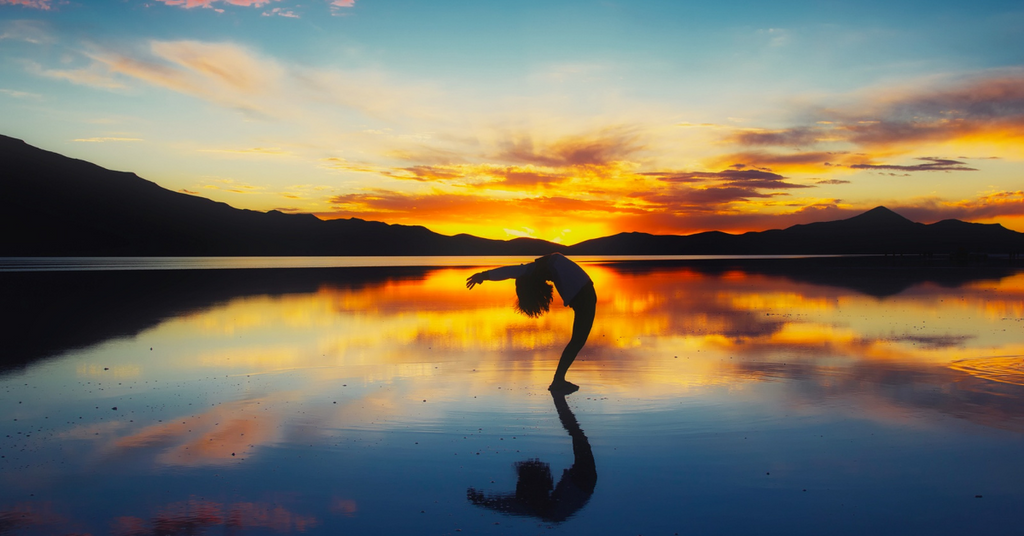The Power of Movement

I believe there is one kind of woman in this world.
She is beautiful and sexy and she comes in all shapes and sizes, ages, creeds, colors and sexual orientations. I wish we had not been socialized to recognize a much more narrow view of beauty. I wish we had already learned to love each other in an inclusive way and to appreciate each other’s differences instead of using them for judgment and division.
So I really don't appreciate it when exercise is associated with a certain size or shape and when skinny is mistaken for healthy and vice versa. Healthy comes in many sizes! Just like the way we move comes in many forms. The point is that we keep it moving, because make no mistake about it, movement is crucial at every stage of our lives.

How Much Should We Be Moving?
According to the Center for Disease Control & Prevention, adults age 18 to 64 need 30 minutes of “moderate intensity activity” 5 times a week with 2 days of strength training thrown in for good measure. Brisk walking is what the CDC considers moderate intensity activity. When you turn 65, they want you to continue on as before, but add standing on one foot to improve balance.
I am not a medical professional, but I’m going to say this anyway. Please don’t wait until you’re 65 to start thinking about your balance. Keep doing all the things you want to continue to be able to do – like jumping, stretching, twisting, twirling, bouncing, shimmying, kicking and bending every which way you can. That also sounds like a description of how my three-year-old grandson gets from point A to point B, which brings up another point about movement. As much as we’re able, we should emulate the movement of children. Not in a rough and tumble, bumps and bruises kind of way – think energy, full range of motion and joy.

There are all kinds of ways to make movement an important part of your life. Some require memberships and some can be done in your bedroom. These days, the virtual options are endless if you want to take an exercise class or learn a new style of dance.
Build It In
One sure way to add (or increase) movement to your life is to infuse it into your daily routine. Here are some suggestions for doing exactly that from The Active Times.
At work
Stand up to take phone calls.
Go for a walk at lunch.
Take the stairs.
Walk around every 90 minutes or so - to the break room, water cooler or restroom (Set an alarm on your phone so you don’t forget.)
If you’re really busy with work, stretch/exercise at your desk.
Have a question for a coworker? Walk to their desk instead of sending an email.
When possible, court clients with meetings centered around activities like golf or social fitness classes.
At home
Play fitness-oriented video games, like Wii Fit or Dance Dance Revolution.
Dance around your house just for fun.
Clean. (It totally counts as exercise.)
Play with your pets.
Do a few sets of bodyweight exercises (squats, lunges, push-ups, burpees, etc.) any time you have an extra 5 or 10 minutes to spare, during commercial breaks while watching TV or in between episodes if you’re watching Netflix.
On the go
Walk or ride your bike to your destination whenever possible.
Park your car as far away from the door as possible when running errands.
If you use public transportation, ride standing up. And if you have the time, get off one or two stops early and walk the extra distance.
At the mall or department store: take the stairs and skip escalators and elevators.
Instead of always opting for sedentary plans, like going to the movies, schedule more adventurous weekend activities like bike rides, park dates or easy day-hikes.

The Devil Is In the Details
If you would like to read more about strength training, CLICK HERE to go to an article from Harvard Medical School.
Dancing more your thing? CLICK HERE to read about dances that replace your gym workout.
I love this exercise guide from AARP. CLICK HERE to see how the author has built a routine around everyday movements we make around the house.
All About the Benefits
So after all of that, what's the big deal about movement in your life? Here's a list. It's not exhaustive, but it emphasizes the point of why keeping or adding movement to your life is a no brainer.
- Improves sexual health
- Helps to control weight
- Reduces risk of heart diseases
- Helps to manage blood sugar and insulin levels
- Improves mental health and mood
- Helps keep thinking, learning and judgment skills sharp as we age
- Strengthens bones and muscles
- Reduces risk of some cancers
- Reduces your risk of falls
- Improves sleep
- Increases the chance we'll live longer
Hard to find a downside on that list. And it doesn't even mention what happens to your energy level, self-esteem and sense of well being when you're regularly active - when you unleash the power of movement.
What's your favorite way to move? Leave a comment and let us know!
Sources:
MedlinePlus, Benefits of Exercise
CDC Website
Harvard Medical School Healthbeat, Want to Live Longer and Better? Do Strength Training, March 27, 2018 (updated)
Jump Start by WebMD, Dances That Replace Your Gym Workout, Sara Cheshire, from the WebMD archives
The Active Times, 20 Easy Ways to Build Exercise Into Your Daily Routine, Katie Rosenbrock, 9/24/2014
AARP Healthy Living Blog, Exercises for Lifelong Fitness, Beth Howard, April 4, 2016



Leave a comment